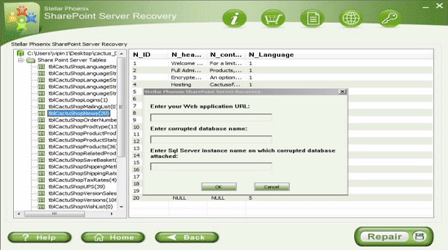Recover Data from an Unattached Content in SharePoint

SharePoint content database generally consists those sites which users create in web applications. This can easily connect to unattached content database to farm and can be used the items for backup. When the data is recovered from content database then it’s very easy to use SharePoint PowerShell cmdlets to retrieve the recovered content. But the database should be attached to SQL server but not necessary to attach the SharePoint web application. SharePoint is used by many organization to store the data and many important data is stored but sometimes this database gets damaged due to several reasons and the entire database becomes inaccessible. Due to this the stored data has a high risk of corruption and sometime it shows error.
Problem
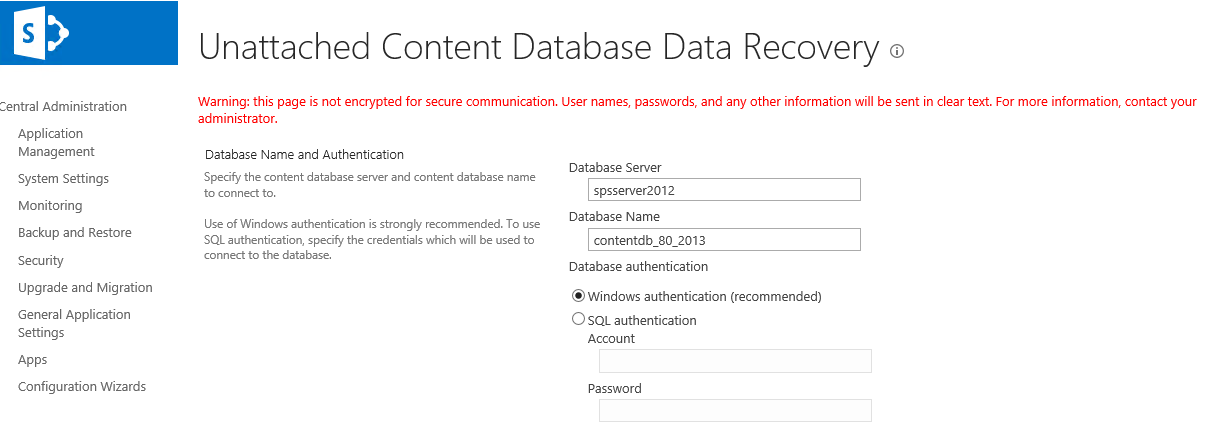
Well the problem may arise many times without letting users to know and many times as a SharePoint administrator, you want to restore some saved content within content database. Then what to do and how to recover data from an unattached content in SharePoint?
Don’t Miss: SharePoint 2016 Backup And Recovery
Solution
Well with the earlier versions of SharePoint, to recover the content from backup files, first the content should be restored to the database server and then to attach the restored database to another SharePoint farm. After that it becomes important to export the required content from new temporary farm and after that have to migrate the original farm to that place where you wish to restore it. But this entire method requires a lot of time along with perfect planning.
In SharePoint 2010, it removes the administrative overhead with inclusion of Granular Backup with recover feature. However in the above scenario, there is no requirement to setup another temporary farm to get back the content from backup. Here we can very easily recover the content database backup on any SQL server instance and after that use unattached content database recovery feature from central administration just to browse the content of backup. After that export it to the file and just import whenever required.
How to Perform the Unattached Content Database
Well after getting the database to SQL server, SharePoint does not have knowledge about it. So in SharePoint central administration, choose Backup and Restore and then follow the process:
- First use central administration to recover site collection, entire content database or a list of library to backup file
- After that use a PowerShell to import the content you want like backed up content to new or previous site
- Here you can do according to your wish as when you only need a subset of files from document library then you have to delete extra files or need to transfer documents which you require into a library
Recommended: Fix 0x800700de Sharepoint Copy Errors
How to Browse and Export content of an unattached database from the Central Administration
Here it is shown of how to backup and the content from database of web application. Have to follow some of the powerful steps such as:
Go to START -> All Programs -> Microsoft SharePoint 2010 Products -> SharePoint 2010 Central Administration, on the left side hit on Backup and Restore link as mentioned below, and after that on the detail pane, hit on Recover data from an unattached content database under Granular Backup as shown below:
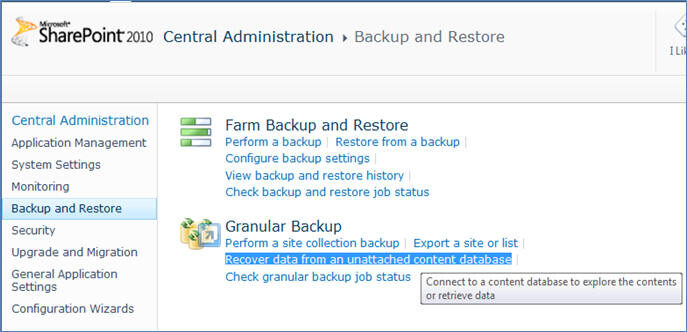
Now on the Unattached Content Database Data screen, you have to identify the database server along with database name that you have restored from backup with authentication type and credentials to connect to that database. After that stipulate the type of action you wish to perform.
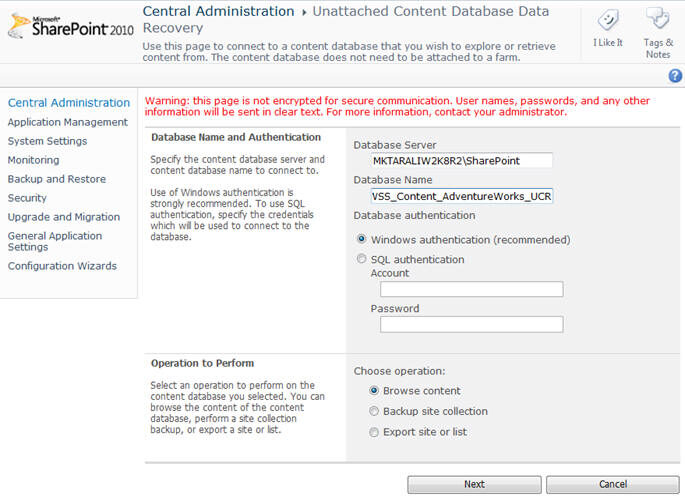
On the Browse Content page, select the site collection, site and then library to export. You can identify the type of operation which you want to perform and according to your selection, the next screen will vary.
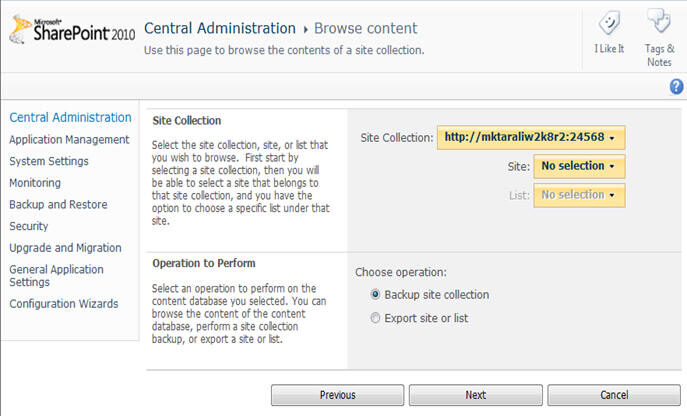
On the Browse Content page, select Backup site collection and you will get next screen. In the Site collection backup screen, you have to select the name of the site collection that you want to backup, then recognize the location along with the name of the backup file.

Also Read: SharePoint 2013 Installation and Configuration Issues!
Restore the site collection from SharePoint Repair Tool
When nothing works then it becomes very irritating situation for everyone and so it is required to have a powerful tool that completely recovers the data from SharePoint. Use SharePoint Repair Tool which repairs the database and recover the data from it. It also recovers the data from unattached content in SharePoint. This tool helps you to perform a quick SharePoint repair and recover crucial or all content database related to particular Web application and its site collections. It allows administrators or users to extract SharePoint databases such as documents, table, indexes, labels, media files and other objects from inaccessible MDF files.



Steps to Recover Corrupted SharePoint Database
Step 1 – Download and Install SharePoint File Repair Tool on your system. Launch the software and you will see the interface and shown in the image below. You can select either ‘Complete Repair’ or ‘Document Recovery’.
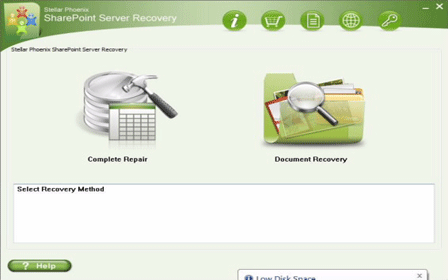
Step 2 – With ‘Complete Repair’, the screen shows options to select and find SQL Server (.MDF) files. Use ‘Search File’ option if you don’t know actual path of the database. Now click on ‘Scan’ to start scanning.

Step 3 – Once the scan process complete, the tool will create a tree of all SharePoint database tables will be demonstrated in the left pane. The sample will be in the right pane. Now click on ‘Repair’ to inaugurate repairing for preferred database.
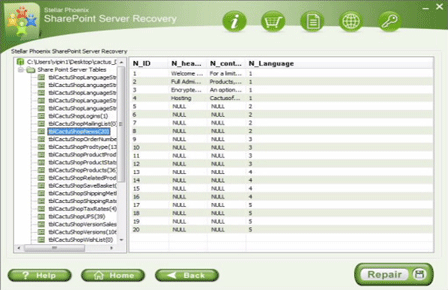
Step 4 – When you click on ‘Repair’, the below dialog box will get displayed. Specify the SQL Server name/Instance name and the desired destination path. Click ‘Browse‘ to select the destination path. Click ‘OK‘.
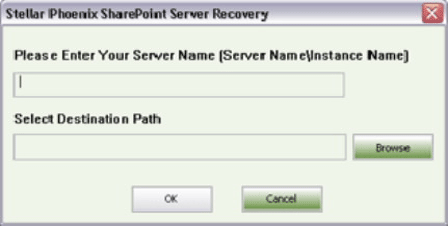
Step 5 – After completion of the process, a message will be displayed like ‘Recovered file saved at the desired location’. Now hit ‘OK’ button.

Step 6 – Another dialog box will ask you to attach repaired database to the web application. If you click ‘Yes’ button then below dialogue box will appear. Now enter application URL, name of the damaged database and SQL server instance name and then continue by pressing ‘OK’. When it’s done, repaired database will be available.
